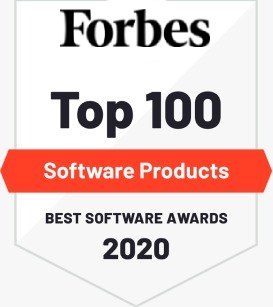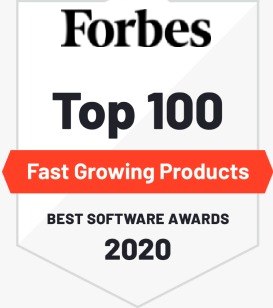Section 1 : Introduction
|
|
Lecture 1 | The power of Tableau for data scientists | 00:01:56 Duration |
|
|
Lecture 2 | What you should know | 00:02:06 Duration |
Section 2 : Green and Blue Fields What Do They Mean
|
|
Lecture 1 | Understand the difference between green and blue fields | 00:04:46 Duration |
|
|
Lecture 2 | How do green and blue fields affect rows and columns | 00:03:50 Duration |
|
|
Lecture 3 | How do green and blue fields affect colors | 00:05:41 Duration |
|
|
Lecture 4 | How do green and blue fields affect filters | 00:05:44 Duration |
|
|
Lecture 5 | How do green and blue fields affect dates | 00:05:36 Duration |
|
|
Lecture 6 | Challenge Green and blue | 00:00:43 Duration |
|
|
Lecture 7 | Solution Green and blue | 00:03:47 Duration |
Section 3 : Connecting to a Source of Data
|
|
Lecture 1 | How to connect to Excel sheets | 00:05:45 Duration |
|
|
Lecture 2 | How to clean Excel data with the data interpreter | 00:03:40 Duration |
|
|
Lecture 3 | How to connect to PDF files and extract tables of data | 00:03:54 Duration |
|
|
Lecture 4 | How to connect to a local database | 00:05:36 Duration |
|
|
Lecture 5 | Challenge Connecting to data | 00:00:56 Duration |
|
|
Lecture 6 | Solution Connecting to data | 00:04:56 Duration |
Section 4 : Combining Data
|
|
Lecture 1 | Combining data using relationships | 00:05:27 Duration |
|
|
Lecture 2 | What are the different ways of joining data | 00:05:37 Duration |
|
|
Lecture 3 | How to join tables in the same data connection | 00:05:54 Duration |
|
|
Lecture 4 | How to join tables using a cross-database join | 00:05:17 Duration |
|
|
Lecture 5 | How to append one data source to another using unions | 00:06:08 Duration |
|
|
Lecture 6 | Challenge Combining data | 00:00:54 Duration |
|
|
Lecture 7 | Solution Combining data | 00:04:06 Duration |
Section 5 : When and How to Create Data Extracts
|
|
Lecture 1 | What are the pros and cons of using a data extract | 00:05:34 Duration |
|
|
Lecture 2 | How to create a data extract | 00:05:18 Duration |
|
|
Lecture 3 | How to limit the data in a data extract | 00:05:28 Duration |
|
|
Lecture 4 | How to edit a data extract to include more data | 00:04:34 Duration |
|
|
Lecture 5 | Challenge Working with extracts | 00:01:02 Duration |
|
|
Lecture 6 | Solution Working with extracts | 00:03:37 Duration |
Section 6 : Comparing Measures
|
|
Lecture 1 | What are measure names and measure values | 00:04:36 Duration |
|
|
Lecture 2 | Creating a combined axis chart | 00:04:46 Duration |
|
|
Lecture 3 | Creating a dual axis chart | 00:05:20 Duration |
|
|
Lecture 4 | Creating a bar in bar chart | |
|
|
Lecture 5 | Creating a multiple measure crosstab | 00:05:17 Duration |
|
|
Lecture 6 | Enhance a crosstab using colors to create a highlight table | 00:04:23 Duration |
|
|
Lecture 7 | Comparing two measures using a scatter plot | 00:05:27 Duration |
|
|
Lecture 8 | Enhance scatter plots using trend lines and animation | 00:04:55 Duration |
|
|
Lecture 9 | Challenge Comparing measures | 00:00:58 Duration |
|
|
Lecture 10 | Solution Comparing measures | 00:04:52 Duration |
Section 7 : Transform Your Data with Calculations
|
|
Lecture 1 | How do calculations work in Tableau | 00:05:31 Duration |
|
|
Lecture 2 | Using calculations in a join | 00:05:22 Duration |
|
|
Lecture 3 | How do table calculations work | |
|
|
Lecture 4 | Direction in table calculations | 00:04:31 Duration |
|
|
Lecture 5 | What are level of detail (LOD) calculations | 00:04:00 Duration |
|
|
Lecture 6 | Calculate time durations | 00:05:19 Duration |
|
|
Lecture 7 | Using IF calculations | |
|
|
Lecture 8 | Challenge Calculations | 00:00:42 Duration |
|
|
Lecture 9 | Solution Calculations | 00:03:05 Duration |
Section 8 : Mapping Your Data
|
|
Lecture 1 | Just because you can, should you create a map | 00:04:46 Duration |
|
|
Lecture 2 | How to create an area map | 00:05:07 Duration |
|
|
Lecture 3 | How to create a symbol map | 00:05:21 Duration |
|
|
Lecture 4 | Customizing the look of your maps | 00:05:28 Duration |
|
|
Lecture 5 | Create locations from coordinates | 00:04:50 Duration |
|
|
Lecture 6 | Create lines to connect locations on a map | 00:05:22 Duration |
|
|
Lecture 7 | Analyzing distances using buffer calculations | 00:04:24 Duration |
|
|
Lecture 8 | Challenge Mapping | 00:00:41 Duration |
|
|
Lecture 9 | Solution Mapping | 00:04:17 Duration |
Section 9 : Analytics
|
|
Lecture 1 | Using colors to highlight data | 00:05:42 Duration |
|
|
Lecture 2 | How to create reference lines | 00:04:45 Duration |
|
|
Lecture 3 | How to create reference bands | 00:05:30 Duration |
|
|
Lecture 4 | How to use motion to show changes over time | 00:05:41 Duration |
|
|
Lecture 5 | Challenge Analytics | 00:01:02 Duration |
|
|
Lecture 6 | Solution Analytics | 00:04:37 Duration |
Section 10 : Using Parameters for Greater Interaction
|
|
Lecture 1 | How are parameters different from filters | |
|
|
Lecture 2 | How to use parameters in calculations | 00:04:29 Duration |
|
|
Lecture 3 | Create dynamic reference lines using parameters | 00:05:02 Duration |
|
|
Lecture 4 | Use a parameter to select dimensions and measures | 00:05:25 Duration |
|
|
Lecture 5 | Use a parameter to search free text fields | 00:04:58 Duration |
|
|
Lecture 6 | Top N analysis | 00:04:56 Duration |
|
|
Lecture 7 | Challenge Parameters | 00:00:44 Duration |
|
|
Lecture 8 | Solution Parameters |
Section 11 : Dashboard Actions and Design Tips
|
|
Lecture 1 | How to use containers in a dashboard | 00:04:15 Duration |
|
|
Lecture 2 | How to create a tiled dashboard | 00:05:17 Duration |
|
|
Lecture 3 | How to create a floating dashboard | 00:04:39 Duration |
|
|
Lecture 4 | How to create device-specific dashboards | 00:05:17 Duration |
|
|
Lecture 5 | How to use filter actions | 00:04:37 Duration |
|
|
Lecture 6 | How to use highlight actions | 00:05:09 Duration |
|
|
Lecture 7 | How to use URL actions | 00:05:54 Duration |
|
|
Lecture 8 | How to use set actions | |
|
|
Lecture 9 | Challenge Dashboards | 00:01:00 Duration |
|
|
Lecture 10 | Solution Dashboards | 00:06:17 Duration |


